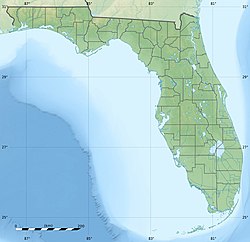| Little River | |
|---|---|
 Part of the northern boundary to the city of Miami, the Little River winds through Miami-Dade County from where it connects with the Miami River canal near Hialeah to where it empties into Biscayne Bay. | |
| Location | |
| Country | United States |
| State | Florida |
| Physical characteristics | |
| Mouth | Biscayne Bay |
• coordinates | 25°51′03″N80°11′27″W / 25.85096°N 80.19071°W |
The Little River is a river passing through the northern part of Miami, Florida, United States. It empties into Biscayne Bay.
